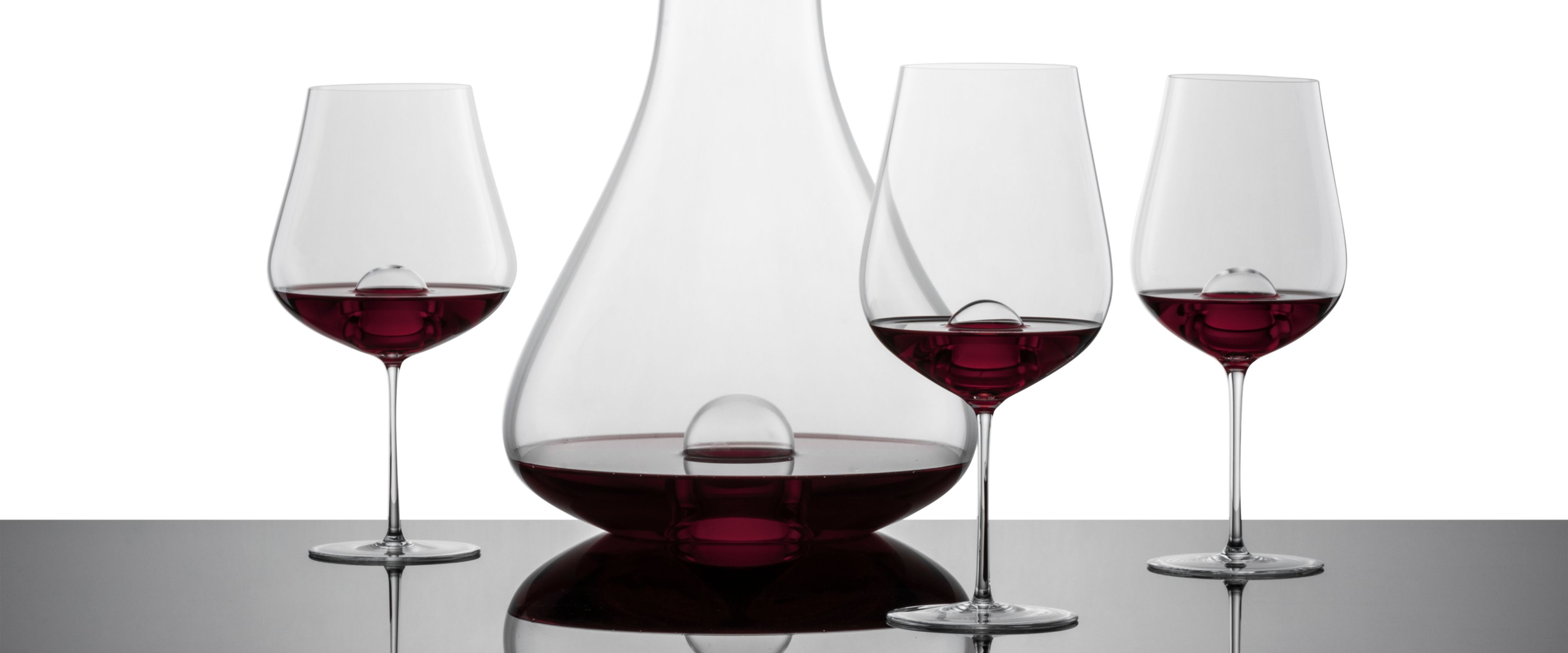
Guides
How to serve a good glass of wine
Perfect wine service
When should you decant the wine before serving? Why should you decant your wine in general, and which wine glass should you choose? Many questions may arise when serving a glass of wine to yourself or to your guests, but it doesn't really have to be so difficult. Here is a guide to serving wine correctly, with advice on everything from decanting to the correct serving temperature. Cheers!

Decanting your wine
When you pour wine into a carafe, it is called decanting the wine. This is done primarily for two reasons. The first is to ensure that the wine is aerated so that the full flavour comes out and the wine's aroma is allowed to spread.
The other reason is to make sure that no sediment from the bottle finds it way into the glass. To prevent the sediment from being mixed with the wine, pour the wine carefully into a carafe, leaving the sediment in the bottle.
Keep a light source behind the bottle so that you can see when the sediment is approaching the bottleneck. It is a good idea to remove the entire foil from the bottle, which makes it easier to see when the precipitate approaches the neck when pouring.
Remember to use a wine that has been standing upright for a few days and has not been shaken, which allows it to settle, sinking the sediment to the bottom of the bottle.
TIP: Wrap the wine bottle in wet paper towels and put it in the freezer for 5-10 minutes to cool it down faster.
Chill your wine quickly.

At what temperature should your wine be served?
As a good rule of thumb, white wines should be served at between 7–13 degrees and red wines should be served at between 12–18 degrees. However, there are nuances, and lighter wines are basically served at a slightly cooler temperature than full-bodied wines. A glass of champagne or other sparkling wine is ideally served fresh and delicious at a refrigerator-cool temperature.
When is the wine too cool or too warm? If your wine lacks aroma, it may be because it was served too cool. The classic example is a white wine that has been stored in the refrigerator. Try warming the wine by cupping the glass with both hands. If you feel an almost prickly sensation in your nose when you sniff your wine, it may be too warm. Chill for 15–20 minutes and try again.
The right equipment for serving wine
A carafe is worth its weight in gold when decanting your wine, but there is also other wine-serving equipment. For example, a drop catcher can be indispensable when you want to avoid wine stains on the fine white tablecloth, or on your clothing. You will also go a long way with a spout that ensures that the wine is aerated when serving and adds an exclusive note to the wine experience. Of course, we can't avoid a lovely corkscrew, such as the good old waiter’s corkscrew, which is not without reason also called “the waiter’s best friend”.

Which wine glass should you choose?
There can be big differences in tasting the same wine in different glasses. The intensity of the wine's aroma is influenced by the glass's bowl. This means, for example, that the more delicate and aromatic wines benefit from a wine glass with a large round bowl, as this will gather more aroma due to the larger surface.
On the other hand, a more powerful, spicy wine will benefit from a narrower bowl, which gathers less aroma. The classic champagne flute has an effervescent look and is ideal for keeping the bubbles in sparkling wines, so the festivities can continue all night long. For more aroma, serve your sparkling wine in a classic white wine glass. It doesn't look as festive as a flute, but your senses of taste and smell will thank you.
The stem of a wine glass does not affect the wine’s aroma and taste, but a glass without a stem can work really well in a more relaxed setting. When drinking from a stem wine glass, hold the glass by the stem close to the foot. You don't have to lose sleep over not having a Hermitage glass or one made for the Alsacian Riesling Grand Cru. You can certainly manage with less. Experiment and you will discover a difference.